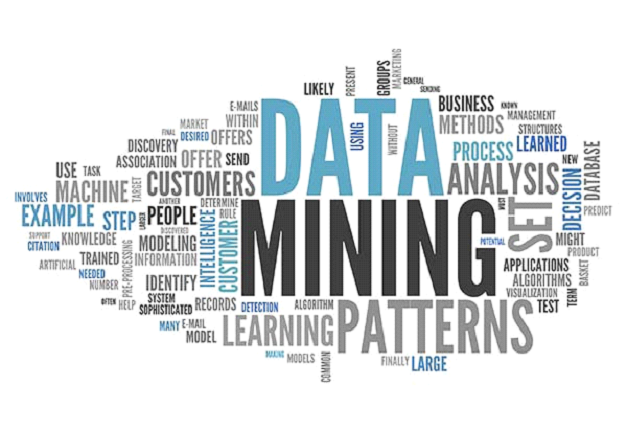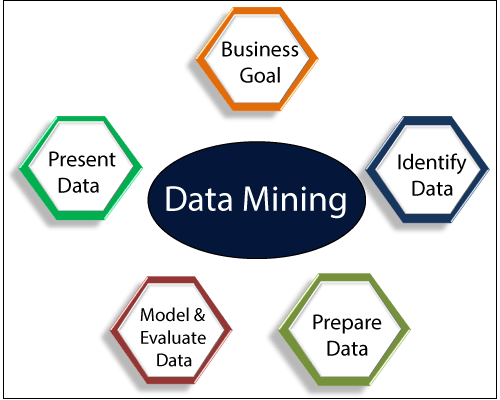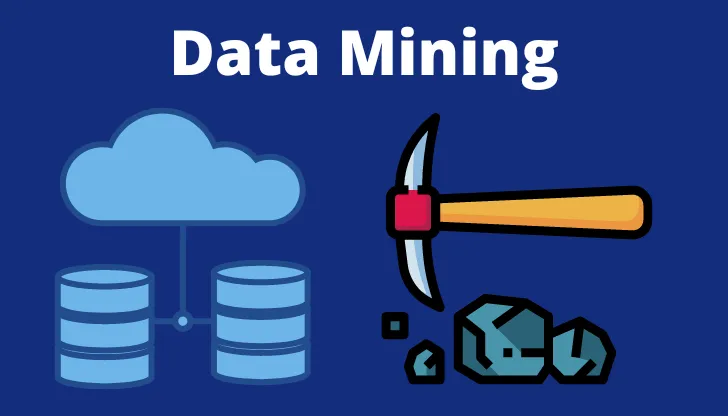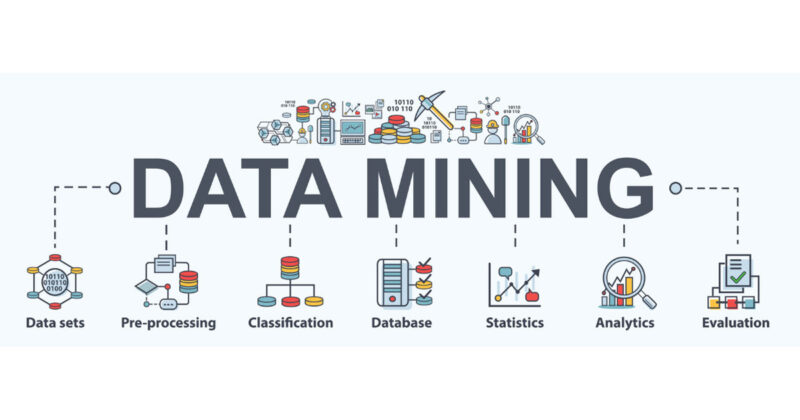Data mining is the process of finding anomalies, patterns, and correlations in large datasets to predict outcomes. Data mining is becoming more and more popular as a concept, but not many people know what it stands for. Many online companies are talking about how to use data mining to improve the quality of their services.
But what is data mining? Is this legal?
Table of Contents
What Is Data Mining

Data mining is the process of sorting large data sets to identify patterns and relationships that can help solve business problems through data analysis. Data mining techniques and tools enable businesses to predict future trends and make more informed business decisions.
Data mining is a key part of data analysis and one of the core disciplines of data science, which uses advanced analytical techniques to discover useful information in data sets. At a more granular level, data mining is a step in the process of Knowledge Discovery in Databases (KDD), a data science method for collecting, processing, and analyzing data. Data mining and KDD are sometimes used interchangeably, but they are often seen as different things.
Is Data Mining Illegal?
By itself, data mining is not illegal. The problem is where the data comes from and what the miners do with the results.
The data needs to be public knowledge, such as weather data, or obtained voluntarily. This means users of websites and apps, as well as participants of online and physical surveys, need to be aware that the company will keep their answers and information for analysis and mining.
Depending on the source of the data, companies and institutions that do not have permission to use the data can violate privacy laws both locally and offshore. Not to mention, most countries prohibit the use of data mining insights to discriminate against individuals based on age, gender, gender, race or religion.
Why Is Data Mining Important?

Data mining is a critical component of a successful analytics program in an organization. The information it generates can be used in business intelligence (BI) and advanced analytics applications that involve analysis of historical data, as well as real-time analytics applications that examine streaming data as it is created or collected.
Effective data mining helps in planning business strategy and managing all aspects of operations. This includes customer-facing functions such as marketing, advertising, sales and customer support, as well as manufacturing, supply chain management, finance and human resources. Data mining supports fraud detection, risk management, cybersecurity planning, and many other critical business use cases. It also plays an important role in healthcare, government, scientific research, mathematics, sports, and more.
How Does Data Mining Work?

1. Data sources
The first step is to find the data source and import it to the storage server. This is where first impressions and data sources matter most. You need your data sources to be credible to ensure your results are credible.
2. Choose a work environment
Whether you’re working on a local device or using a cloud-based environment, now is the time to move it. The environment you choose needs to be powerful enough to handle the amount of data to be processed. If you work with a team, accessibility is a priority, making a cloud-based environment the best option.
3. Data segmentation and classification
Whether or not the data you’re working with is labeled, before you start processing it, you need to organize it into categories that relate to the type of information or pattern you want to extract. Depending on the size of the data, you may need to process it in segments rather than as a whole.
4. Data mining
After preparing the data and deciding what to do with it, comes the actual process of mining and extracting the information. You can use dedicated software for this step or work independently using a compatible programming language such as R, Python or SQL.
Data mining uses mathematical models to discover and extract basic details from raw data. Still, you should not confuse it with data analytics, which uses data and insights produced by data mining to build models and predictions.
5. Translation results
On their own, mining results can be difficult to understand. The final step is to visualize the data by converting it into a graph or table. While visualization results are not of much use for future analysis and mining, they make it easier for you to understand and share your findings.
Where Is Data Mining Used?
Data mining is primarily used in industries that serve consumers, including retail, finance, and marketing. However, both companies and government agencies can use it to assess the development potential of an area.
Trade
Data mining allows retail chains to analyze shopping baskets to improve advertising, create inventory of merchandise in warehouses, plan how to display merchandise, open new stores, and determine the needs of different categories of customers.
Bank
Data mining allows credit organizations to detect credit card fraud by analyzing such transactions and provide various types of services to different customer groups.
Insurance
Insurance companies analyze vast amounts of data to identify risks, reduce debt losses, and provide related services to customers.
Production
Data analytics enables businesses to align supply plans with demand forecasts, identify production issues at an early stage, and successfully invest in brands. Additionally, manufacturers can forecast depreciation of production assets and plan maintenance and repairs to avoid production downtime.
An example of the application of data mining in industry is to predict product quality based on process parameters.
Sociology
Sentiment analysis based on social media data allows you to understand how specific groups of people relate to specific topics.
Medicine
Data mining systems are also used for medical diagnosis. They are constructed based on rules that describe combinations of various disease symptoms. These rules aid in the choice of treatment.
The Future Of Data Mining
The market for data mining systems is growing.
Recent trends in data mining include developing analytical methods with virtual and augmented reality elements, integrating them with database systems, extracting biological data for medical innovation, web mining (data analysis on the Internet), real-time data analysis, and in data mining Measures to protect privacy. In addition, industry leaders believe that data mining will be used for intelligent applications embedded in enterprise data warehouses in the future.
The main problem with detecting patterns in data is the time it takes to sort an array of information. Unfortunately, known methods either limit this search artificially or build an entire decision tree, reducing the search efficiency. Solving this problem remains the primary goal of data mining product developers.
Conclusion
With the data and information age still in its early stages, data mining is only going to grow in popularity. While ethical issues may still be an issue, in the right hands, data mining can be a force for good and knowledge, not evil and mischief. With the data and information age still in its early stages, data mining is only going to grow in popularity. While ethical issues may still be an issue, in the right hands, data mining can be a force for good and knowledge, not evil and mischief.




